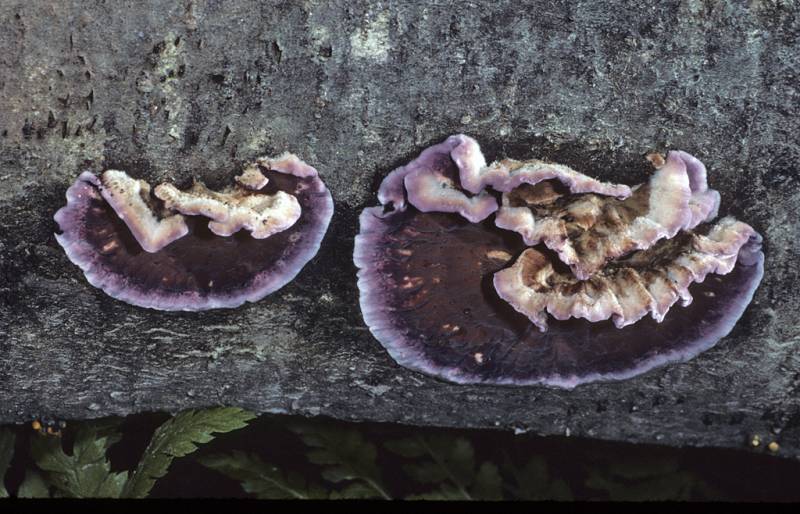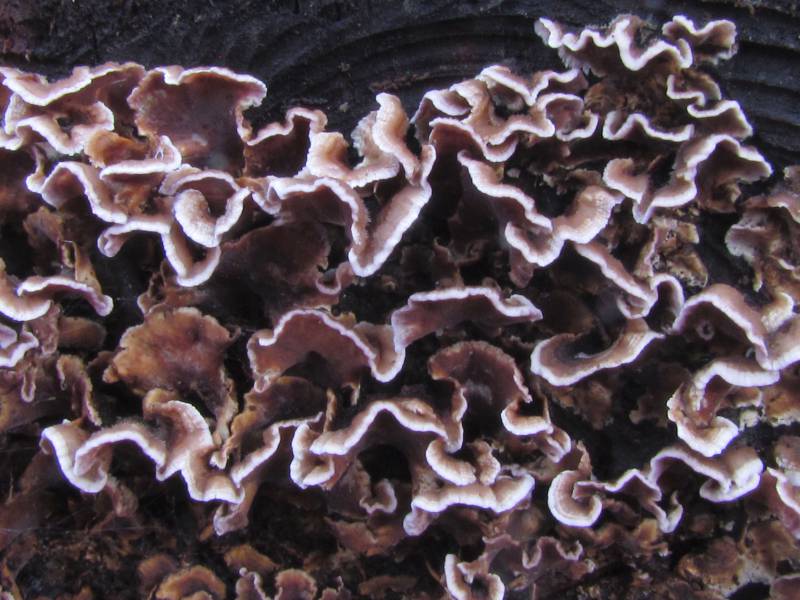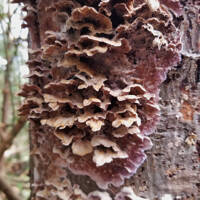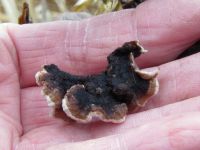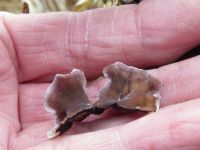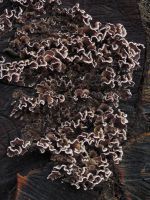Substrate: Hardwood logs, snags, and stumps
Conservation Status: Not of concern
Edibility: Not edible.
Not edible.
The underside does not have visible pores. Amylostereum areolatum, on conifer wood, is similar but has zoned cap that often is moss-covered. Chondrostereum purpureum typically produces thin but tough brackets with finely hairy caps. These are whitish at first, becoming weakly zoned in shades of gray to purple-brown, the margins undulate and whitish. The undersides are smooth though rather knobbly, and are purple to purple-brown, growing over the wood below the caps, and often coalescing with other fruitbodies.
Sources: Trudell, Steve and Joe Ammirati. Mushrooms of the Pacific Northwest. Portland, Timber Press, Inc. 2009. Roberts, Peter and Evans, Shelley. The Book of Fungi. Chicago, The University of Chicago Press, 2011.
PNW Herbaria: Specimen records of Chondrostereum purpureum in the Consortium of Pacific Northwest Herbaria database
CalPhotos: Chondrostereum purpureum photos

